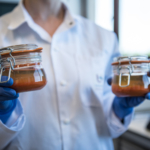New publication gives a rundown on probiotics for primary care physicians
With an increasing number of patients becoming aware of the human microbiome and its role in health, primary care physicians are faced with questions about probiotics as a possible strategy for maintaining health. Patients may see conflicting messages in the news and on product labels – so how can they know which probiotic benefits are scientifically proven?
A new publication in the Journal of Family Practice provides a quick update on evidence for the use of probiotics in different indications, so primary care physicians can equip themselves to provide evidence-based recommendations and to answer patients’ most commonly asked questions about probiotics.
Written by ISAPP board members Daniel J. Merenstein, MD and Mary Ellen Sanders, PhD, along with Daniel J. Tancredi, PhD, the article provides practical advice in the form of practice recommendations, along with comments about safety data from numerous clinical trials.
As Dr. Merenstein stated, “We wrote this article for working clinicians. They are interested in the science but are busy and want a straightforward evidence-based resource. We are hopeful this will be a go-to resource during the busy clinic day.”

Verbatim from the article are the following practice recommendations:
- Consider specific probiotics to prevent antibiotic-associated diarrhea, reduce crying time in colicky infants, and improve therapeutic effectiveness of antibiotics for bacterial vaginosis.
- Consider specific probiotics to reduce the risk for Clostridioides (formerly Clostridium) difficile infections, to treat acute pediatric diarrhea, and to manage symptoms of constipation.
- Check a product’s label to ensure that it includes the probiotic’s genus, species, and strains; the dose delivered in colony-forming units through the end of shelf life; and expected benefits.
The full text can be accessed by logging into Medscape.















